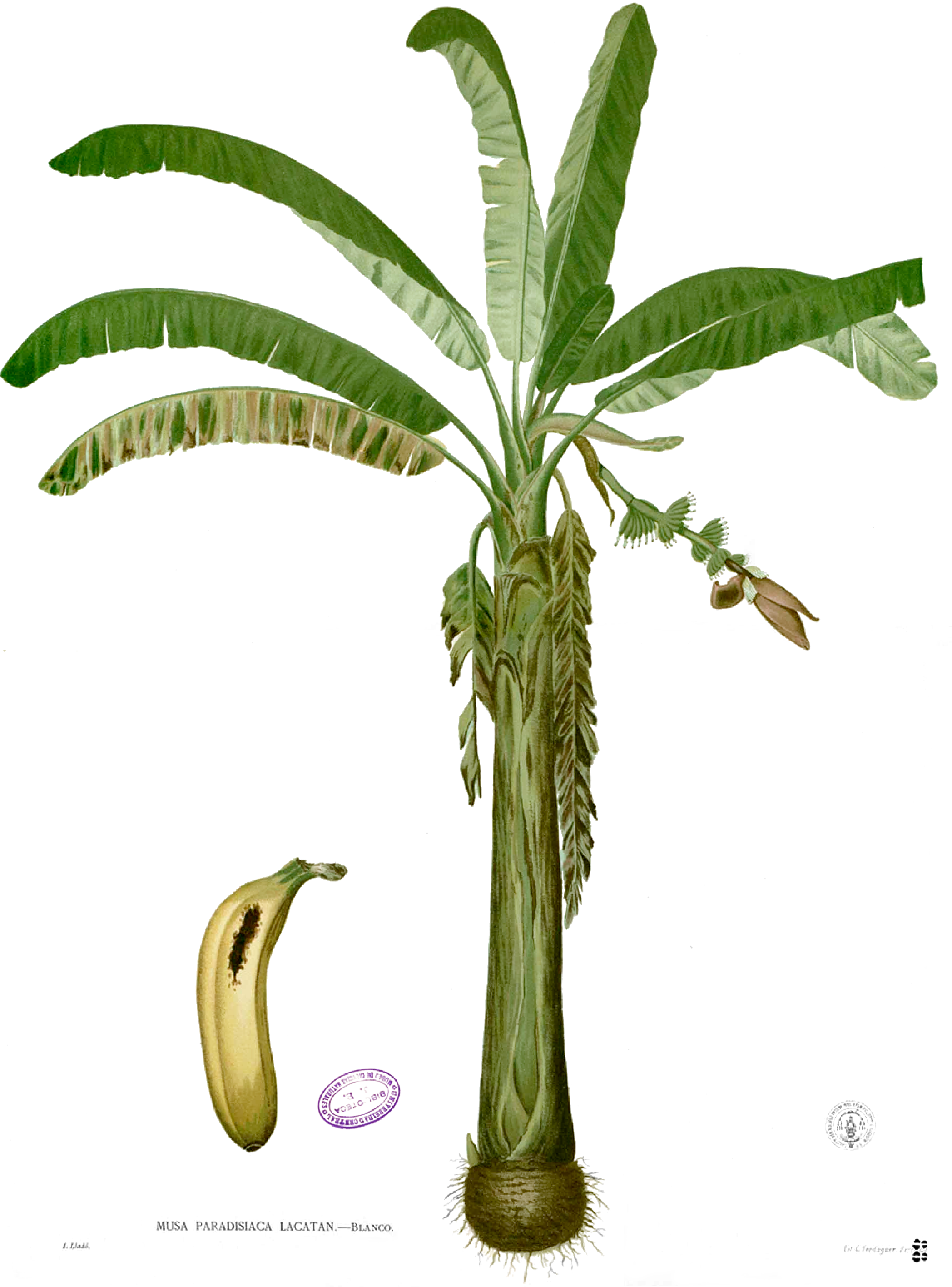Dies ist eine alte Version des Dokuments!
Musa × paradisiaca L. - Musa dacca Horan.; Musa ×paradisiaca var. dacca (Horan.) Baker ex K.Schum. - Musaceae
banana, Banane
„= M. acuminata × M. balbisiana, or Musa AB, AAB, ABB, ABBB, AAAB, AABB Groups: hybrid forms of edible bananas and plantains“ http://www.ars-grin.gov/cgi-bin/npgs/html/taxon.pl?70453
„The above-ground part of the plant is a „false stem“ or pseudostem, consisting of leaves and their fused bases. Each pseudostem can produce a single flowering stem. After fruiting, the pseudostem dies, but offshoots may develop from the base of the plant. Cultivars of M. × paradisiaca are usually sterile, without seeds or viable pollen.“ http://en.wikipedia.org/wiki/Musa_%C3%97_paradisiaca
„Ethyl esters were found to comprise the largest chemical class in the bananas from studied cultivars, accounting 80.9%, 86.5%, 1.2%, 90.1% and 6.1% for the volatile fraction in Dwarf Cavendish, Prata, Ouro, Maçã and Platano varieties, respectively. As found for bananas from Ouro cultivar (50.0%), 3-methylbutyl butyrate was
found to be the most abundant volatile metabolite in bananas from Dwarf Cavendish (28.3%), Prata (37.8%) and Maçã (34.4%) cultivars, while isoamyl acetate (27.6%) occur as the major volatile metabolite in bananas from Platano cultivar.“
[Dynamic headspace solid-phase microextraction combined with one-dimensional gas chromatography–mass spectrometry as a powerful tool to differentiate banana cultivars based on their volatile metabolite profile., Pontes, M., Pereira, J., Câmara, J.S., Food chemistry, Vol.134(4), 2012, 2509-2520]

